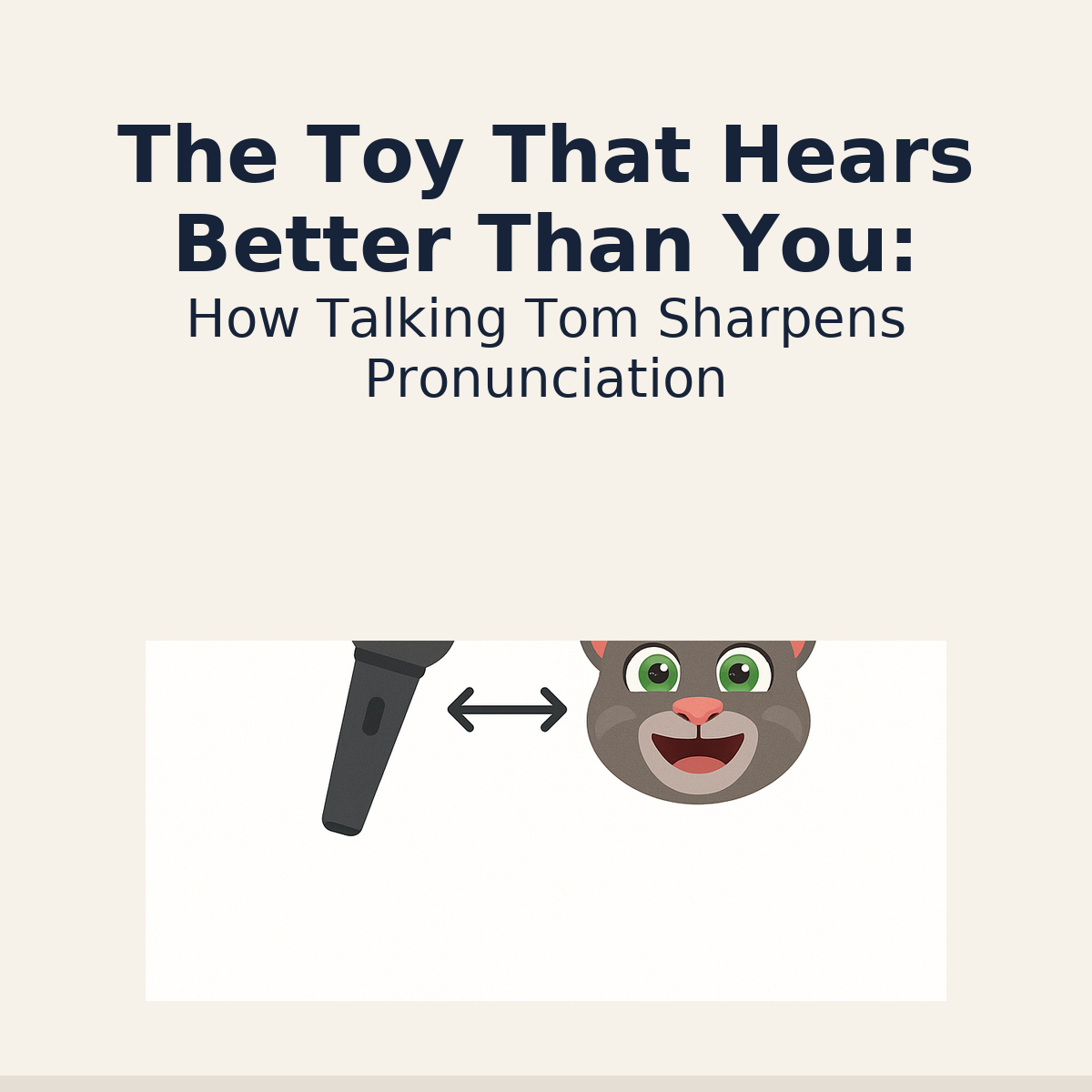Introducción
When you haven’t spoken a language for a while, your pronunciation “falls apart.” A textbook tells you to “think with your lips,” but lips don’t think. They need feedback. The simplest way — turn on a repeating toy (like Talking Tom), which instantly echoes what you say. And yes, it mocks your accent — cheerfully and honestly. Your goal: make “the cat say it right.” The moment that happens, your body finds the correct sound path.
Why It Works (Acoustic Mirror)
- Errors become audible. The cat exaggerates the distortion — you finally hear it.
- Tension drops. It’s a game, not a trial. Fear gives way to play.
- Automatic correction. You repeat again and again until it sounds right — that’s how habit forms.
- The body takes over. Less thinking, more feeling: “this is it!” — and you lock it in.
Mini-protocol (5–7 minutes)
- Warm-up (60 sec): 5–7 short words you stumble on: this, that, world, girl, wanted, decided.
- Three loops (90 sec each):
- Loop 1 — endings -ed/-es. wanted, decided, worked, played, washes, boxes.
- Loop 2 — tricky clusters. world, girls, texts, sixths, clothes.
- Loop 3 — rhythm phrases. I wanted it / He decided it / She washes it.
- Finish (60 sec): one long phrase, three attempts in a row with steady rhythm.
Images Instead of Theory
- decide → decided: “the E wakes up” — a short [ɪ] slips in.
- want → wanted: same — [ɪ] for ease.
- wash → washes: after sibilants add -es, to avoid endless hissing.
Common “Anti-mistakes”
- Don’t insert vowels: texts — not tekests.
- Don’t pronounce -ed always as “ed”: worked → [wɜːkt], played → [pleɪd], wanted → [ˈwɒntɪd].
- Don’t break rhythm: keep the stressed syllable, the rest lighter.
If You Don’t Have Talking Tom
- Dictaphone + instant repeat.
- Shadowing (speak right after a native speaker).
- Metronome 70–80 bpm for rhythm.
How to Track Progress
- The cat sounds less “cartoonish” on difficult words.
- You can reproduce the correct feeling (tongue/jaw/air) within 1–2 tries.
- Yesterday/today recordings show smoother rhythm and fewer extra sounds.
🔗 Also read
- 🌐 Russian version: Игрушка, которая слышит лучше вас: как Talking Tom ставит произношение
- 🇺🇦 Ukrainian version: Іграшка, яка чує краще за вас: як Talking Tom налаштовує вимову
📎 Recommended reading:
Columna del autor por Tymur Levitin
Translator & Teacher Page
© Tymur Levitin — founder, director and head teacher of Levitin Language School / Start Language School by Tymur Levitin
























